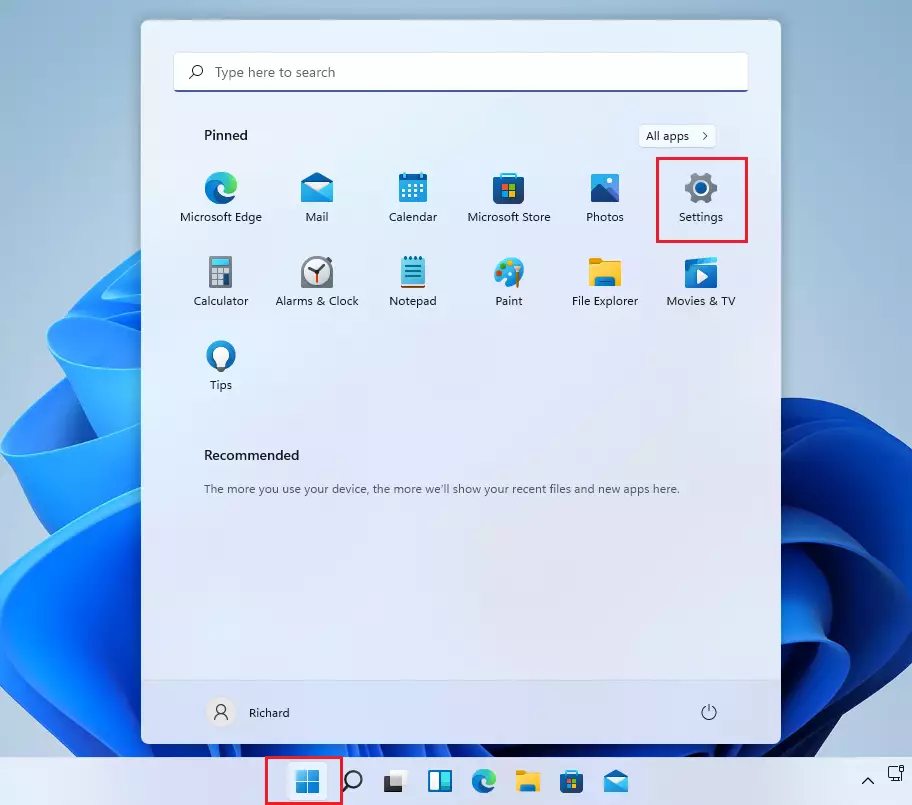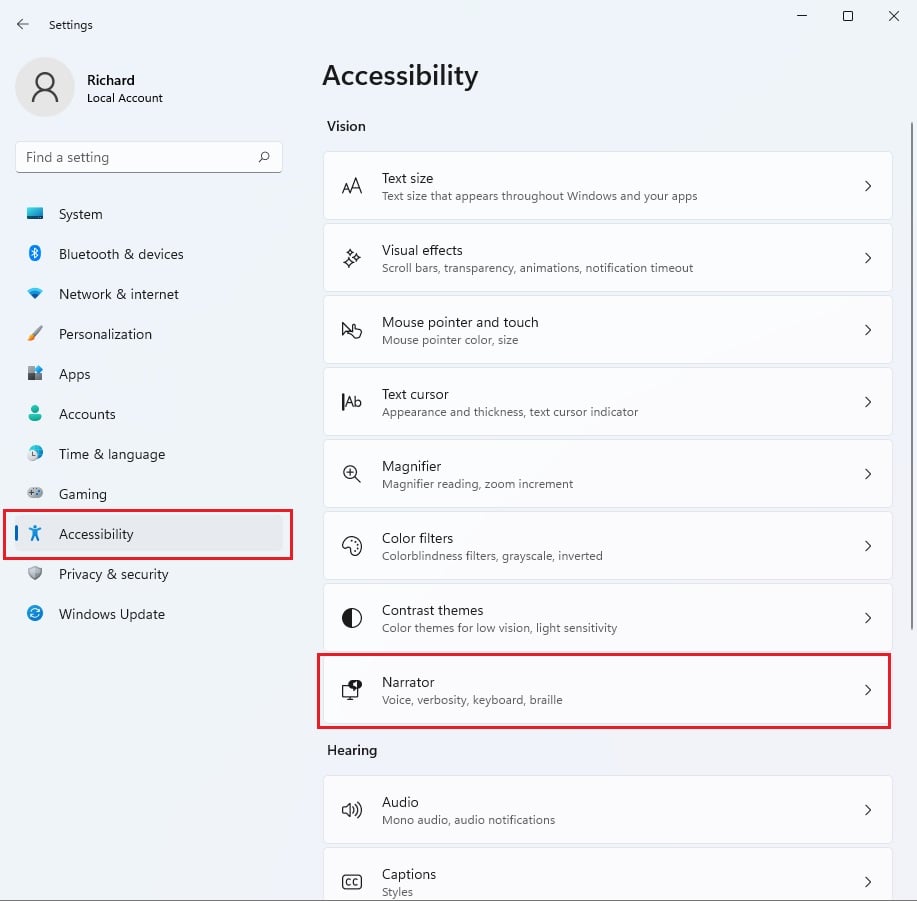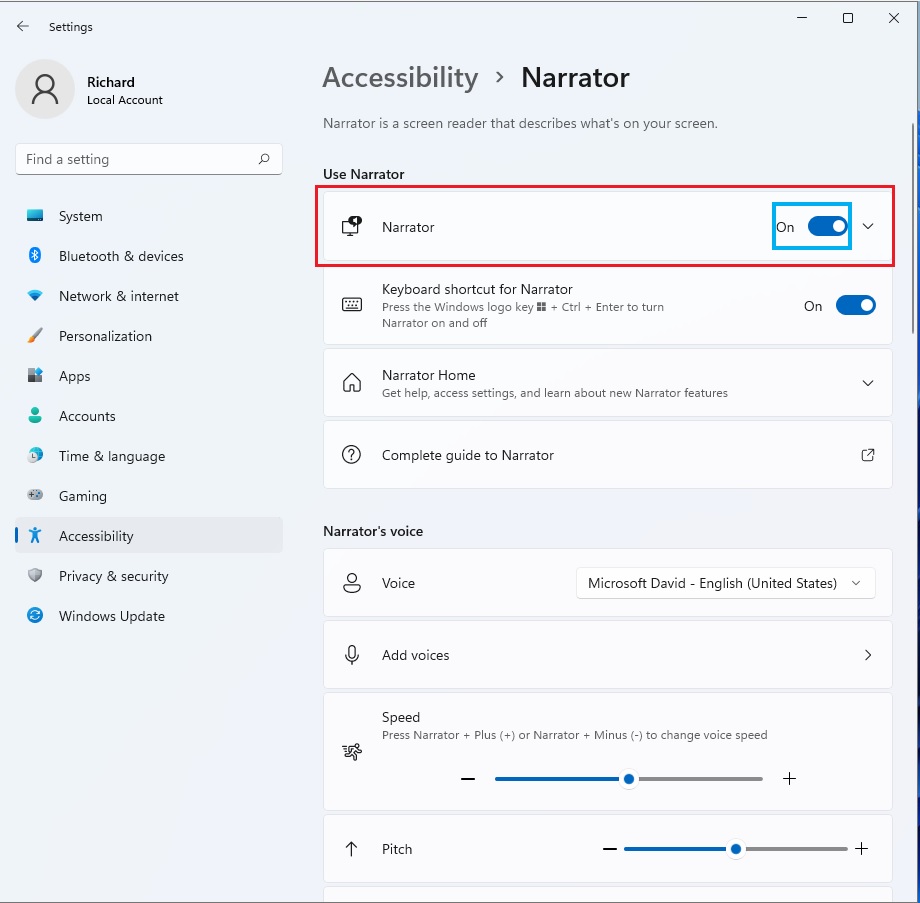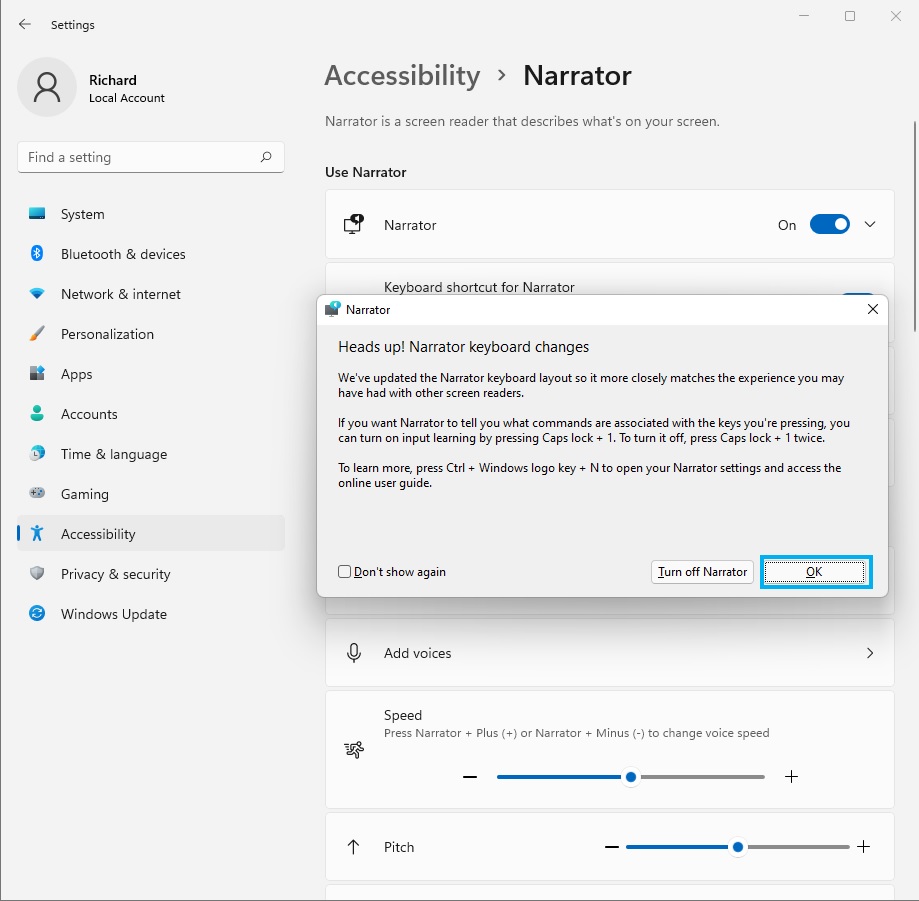This article explains how to turn the Narrator on or off in Windows 11.
The Narrator is a screen-reading app built into Windows 11, so you need nothing to download or install.
The Narrator app feature in Windows helps those with limited vision or who cannot see the text clearly on their screen. The Narrator has also been improved and integrated tightly into Windows.
For example, when you open an email in Outlook, the Narrator will start reading—no commands required. The Narrator will read an email’s status (unread, forwarded, etc.), who sent it, the subject line, and any other characteristics of the email that are important or unique.
For web pages, the narrator automatically reads them, starting at the top of the page.
How to enable or disable Narrator in Windows 11
As mentioned above, the Narrator app feature in Windows helps those with limited vision or who cannot see the text clearly on their screen.
If you want to use the Narrator app in Windows because you’re having difficulties seeing text clearly on your screen or want to turn it off because you don’t need it, the steps below show you how.
Windows 11 has a centralized location for the majority of its settings app. From system configurations to creating new users and updating Windows, all can be done from the System Settings pane.
To get to System Settings, you can use the Windows key + I shortcut or click on Start ==> Settings, as shown in the image below:

Alternatively, you can use the search box on the taskbar to search for Settings. Then select to open it.
The Windows Settings pane should look similar to the image below. Click Accessibility, and select Narrator on the right pane of your screen, as shown in the image below.

On the Accessibility > Narrator settings pane, under Use Narrator, toggle the switch to On or Off to enable or disable Narrator in Windows.

Alternatively, you can press the Windows key + CTRL + ENTER keys to turn it on or off in Windows 11.
Once you turn on Narrator, you should immediately see a pop-up window explaining how to use Narrator and other features. Click OK to close the window and start using Narrator.

Your keyboard will default to the Standard layout. If you want to change this, go to Settings > Accessibility > Narrator, and choose the Legacy layout. You can also access your Narrator settings by pressing the Windows logo key + Ctrl + N. New Narrator commands will not be available in the Legacy keyboard layout if keystrokes for legacy commands conflict with those used in new Narrator features.
You can now close the Settings app.
Conclusion:
- Turning on or off the Narrator in Windows 11 is a straightforward process that can significantly benefit users with limited vision or difficulty seeing text clearly on the screen.
- The centralized location for system settings in Windows 11 allows users to access and adjust accessibility features, including the Narrator, with ease.
- The Narrator provides seamless integration with various applications and web pages, offering enhanced functionality without requiring extensive commands.
- Both the modern toggle switch and keyboard shortcuts provide convenient methods for enabling or disabling the Narrator as needed.
- Users can customize their Narrator experience by adjusting the keyboard layout and accessing additional settings through the Accessibility section in Windows Settings.

Leave a Reply